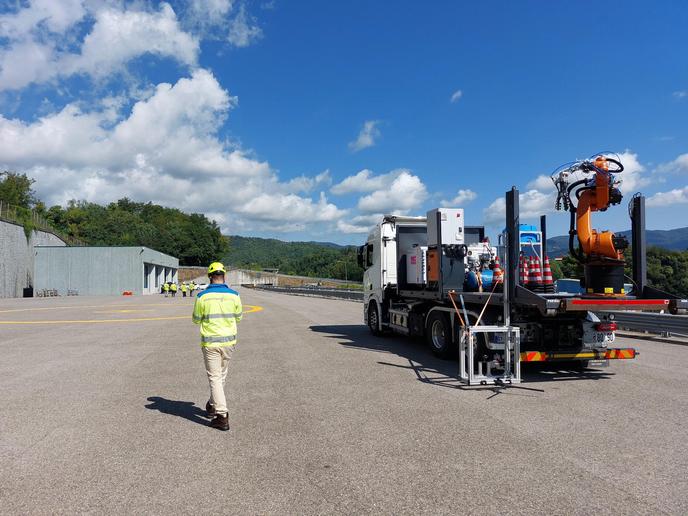The road to safer highways: inside Europe’s smart maintenance revolution
Traditional road maintenance relies heavily on manual labour and outdated inspection methods. This can slow down repairs, increase costs and, most importantly, put workers in danger. According to Eurostat, around 26 000 road fatalities occur every year, many of which are linked to ageing infrastructure and unsafe maintenance conditions. The EU-funded OMICRON project(opens in new window) set out to change this with a complete overhaul of the way road assets are managed and maintained. Using drones, robotics, digital twins and intelligent planning tools, OMICRON has developed a new digital platform to make roads safer, inspections faster and infrastructure more resilient to wear and time.
How robotics and digital twins improve safety and efficiency
One of the project’s primary goals was to reduce risk for road maintenance workers. “Traditional road maintenance relies heavily on manual labour, which is time-consuming and prone to human error,” explains project coordinator Jose Solís Hernández of CEMOSA(opens in new window). OMICRON introduced digital inspection technologies, including long-range drones and sensor-equipped terrestrial vehicles, to assess road surfaces and structures without sending humans into traffic. These systems also deliver more accurate results and feed data directly into the project’s digital twin(opens in new window) platform. The OMICRON platform uses a digital twin created with building information modelling (BIM) and geographic information systems (GIS) to generate a virtual model of real-world road infrastructure. It combines high-resolution images, 3D maps, sensor data and traffic information to deliver a real-time view of road assets. “By simulating various scenarios, the tool helps planners determine the most effective maintenance strategies, prioritise interventions, and allocate resources efficiently,” adds Solís Hernández.
Reducing emissions through smarter maintenance
Road repairs can be resource-intensive and disruptive. OMICRON reduces that burden by improving planning and promoting the use of sustainable materials. “The OMICRON H2020 project contributes to more sustainable and lower-emission road construction and maintenance through several innovative approaches,” says Solís Hernández. These techniques reduce waste and cut emissions. Automated processes also mean fewer repeat interventions, less traffic disruption and a smaller environmental footprint overall.
Tested on real roads (and ready to scale)
The technologies were tested in real conditions in Spain and Italy. Drones, inspection vehicles and predictive planning tools were deployed on major highways like the A2 and A1 corridors. The tests showed that the OMICRON tools worked effectively together, even in heavy traffic and variable weather. “Feedback from infrastructure managers has been extremely positive,” says Solís Hernández. “Some technologies, such as the robotic modular platform for maintenance execution and the digital twin in OMICRON, are being followed to enter into commercial use soon.” While the project focused on road infrastructure, its tools are already being applied elsewhere. OMICRON’s digital twin platform is now being commercialised in the rail and building management sectors. More applications in energy and water networks are on the horizon. By combining robotics, artificial intelligence and predictive modelling, OMICRON has created a safer, more innovative and more sustainable way to manage Europe’s roads, and potentially much more.
Keywords
OMICRON, digital twin, road maintenance, robotics, road infrastructure, OMICRON platform, long-range drones, artificial intelligence




